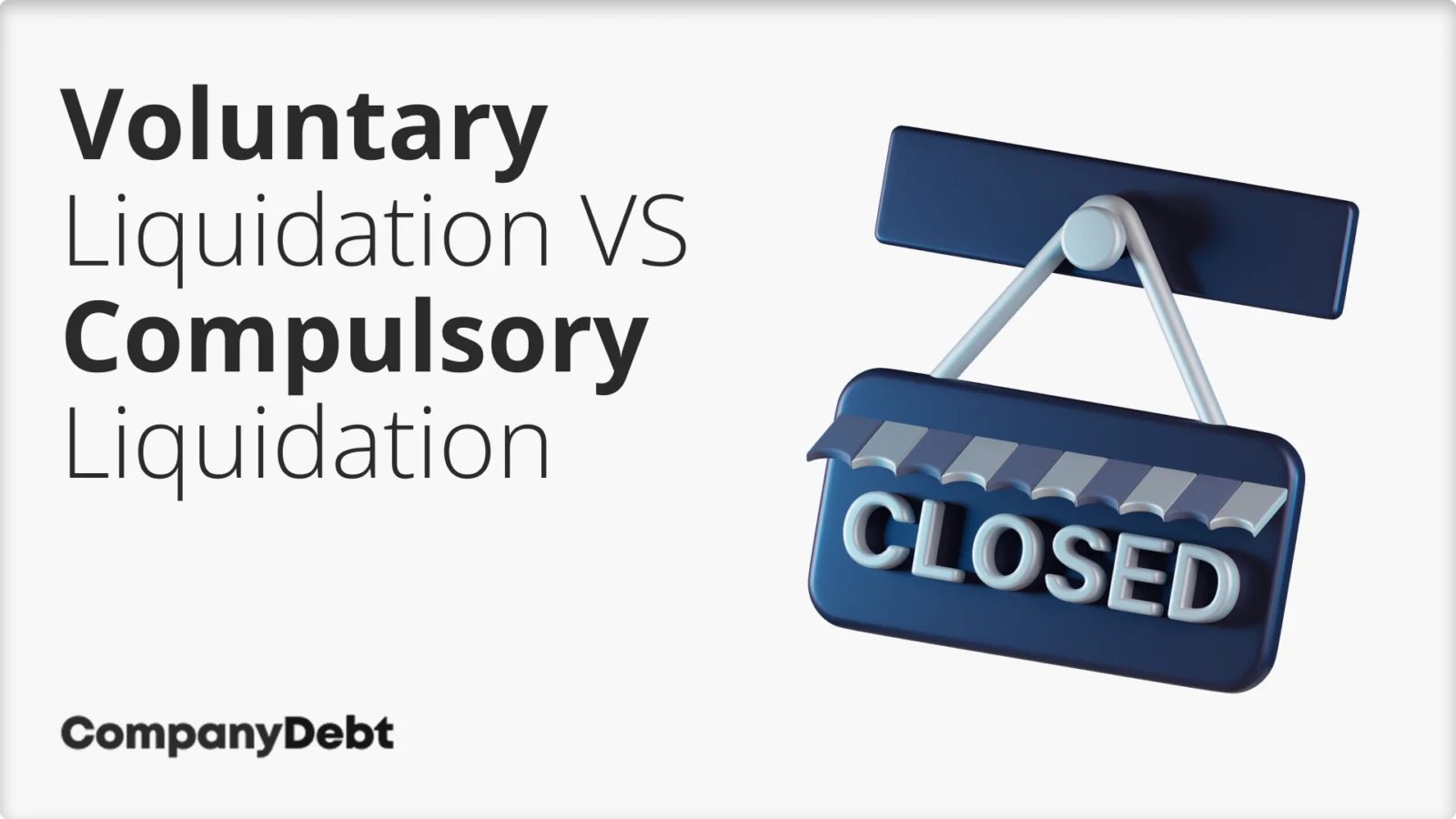
Voluntary vs Compulsory Liquidation
What is the difference between forced and voluntary liquidation? Should you wind up your company voluntarily or face a compulsory liquidation initiated by creditors?
What is the Difference Between Voluntary Liquidation and Compulsory Liquidation?
Voluntary liquidation (CVL) and compulsory liquidation represent two distinct approaches to winding up a limited company.
But from a director’s perspective, one is a significantly preferable scenario.
Voluntary liquidation means choosing to close your company in an orderly manner, usually due to mounting debts[1]Trusted Source – GOV.UK – Liquidation and Insolvency Guide.
Compulsory liquidation, on the other hand, means that this process is imposed by the court[2]Trusted Source – GOV.UK – Apply directly to the court. As a result, it brings with it minimal control and maximum scrutiny for those who’ve been running the company.
Where possible, choosing a voluntary process before compulsory winding up is imposed is to be recommended, as I will explain.

What is Voluntary Liquidation?
Voluntary liquidation is a decision taken by a company’s directors or shareholders to close down the business. This decision is made either when the company is solvent and can settle its debts within a specified period, typically 12 months, or if the company is insolvent and unable to meet its financial obligations.
The process is designed to allow the company to manage its closure in a structured manner, ensuring that creditors are paid off to the extent possible and that any remaining assets are distributed among the shareholders.
Types of Voluntary Liquidation
There are two primary types of voluntary liquidation:
- Members’ Voluntary Liquidation (MVL): This occurs when the directors and shareholders decide to liquidate a solvent company. An MVL is undertaken when the owners believe that the company has served its purpose or they wish to retire and there is no one to take over the business[3]Trusted Source – GOV.UK – Liquidate a company you do not want to run anymore.
- Creditors’ Voluntary Liquidation (CVL): This process is chosen when a company is insolvent, meaning it cannot pay its debts as they fall due.
What Does Compulsory Liquidation Mean?
Compulsory liquidation marks the forced closure of a company, instigated not by its directors or shareholders but by an external party, typically a creditor or the court. This process is initiated when a company fails to pay its debts and is deemed unable to continue its business operations. It represents a legal mechanism to ensure that the assets of the insolvent company are fairly and equitably distributed to its creditors.
Compulsory liquidation has significant implications for all involved. For directors, it can lead to investigations into their conduct and potential disqualification from holding directorial positions if misconduct is found.
For employees, it means the loss of employment. For creditors, although it offers a route to recover owed monies, they may not receive full repayment, depending on the company’s asset realisation.
Why Would You Choose a Voluntary Rather than a Compulsory Liquidation?
Choosing voluntary liquidation over compulsory liquidation can provide several advantages for a company facing insolvency. Here are some key reasons why a voluntary liquidation may be preferable:
| Feature | Voluntary Liquidation | Compulsory Liquidation |
|---|---|---|
| Initiated by | Shareholders/Directors | Creditor or Court |
| Stress & Uncertainty | Reduced stress due to chosen practitioner and clearer process | More stressful and uncertain due to adversarial process |
| Control over Process | More control for directors & shareholders | Less control, court-driven |
| Scrutiny of Company Affairs | Less intense | More intense investigation |
| Director Protection | May help avoid accusations of wrongful trading | Less protection |
| Speed of Process | Generally faster | Slower due to court involvement |
| Stakeholder Perception | Demonstrates responsible management | May be seen as less transparent or cooperative |
While voluntary liquidation offers these advantages, it is still a serious step that should be carefully considered in consultation with professional advisors.
Choosing the Right Path: Expert Advice and Next Steps
Are you facing a company closure? Don’t navigate the complexities alone. Get expert advice from our team of licensed insolvency practitioners at Company Debt. With over 100 years of combined partner experience, we can help you understand your options through practical, transparent advice.
Speak directly with one of our experienced advisors on 0800 644 6080.
If you prefer written communication or need to provide detailed information about your situation, email us at info@companydebt.com. An advisor will respond promptly to discuss your enquiry further and provide transparent pricing information for our services.
The primary sources for this article are listed below, including the relevant laws and Acts which provide their legal basis.
You can learn more about our standards for producing accurate, unbiased content in our editorial policy here.
- Trusted Source – GOV.UK – Liquidation and Insolvency Guide
- Trusted Source – GOV.UK – Apply directly to the court
- Trusted Source – GOV.UK – Liquidate a company you do not want to run anymore







